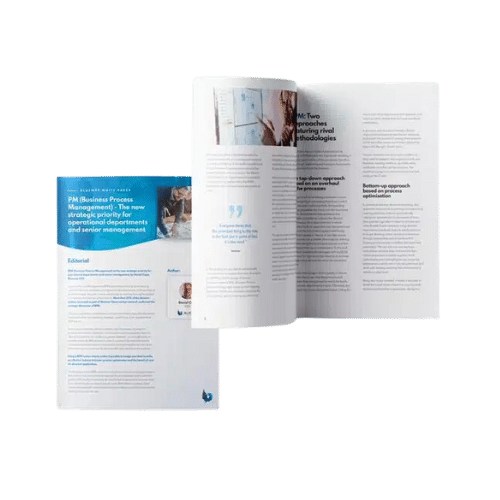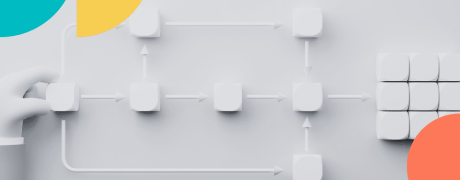E-procurement platforms meet business needs of both an operational and a strategic nature
In a similar vein to supplier selection, a procurement platform provides a clear picture of procurement and decision-making processes. The system facilitates both internal management and external dealings with suppliers covering aspects such as purchase categorisation, sourcing procedures, invitations to tender, and more.
Such platforms are only growing in importance, alongside businesses’ procurement volumes. A procurement platform must therefore not only allow all internal purchasing to be organised, meeting all requirements and with nothing overlooked, but it also needs to provide concrete information for post-purchase analysis. This will enable the department’s performance to be assessed, procurement’s impact on the business to be evaluated, and bespoke KPIs to be defined.
Such a platform also includes collaborative functions, the role of which will be to pool efforts and ensure that no stakeholder’s requirements slip through the net. On a dedicated purchasing platform, data interchange, sharing and enrichment all lie at the heart of business processes. Capitalising on data in relation to business master data repositories is also essential.
Lastly, a procurement platform provides better control over business practices, and ensures that corporate strategy is followed and values adhered to throughout the process. By providing a structuring framework for data interchanges with suppliers and guidelines for all procurement decisions, it is easier to implement specific company policies. The impact (procurement effectiveness, transparency of dealings, etc.) is then as positive internally as it is in terms of the company’s external influence.

Download our white paper on Business Process Management.
The benefits of a procurement platform for a shared view of processes and their progress
A procurement platform provides a 360° panorama of Purchasing Department activities. To this end, in most cases, it offers features such as:
- Procurement planning: enabling each step to be tracked, from the initial expression of a requirement to monitoring changes in purchases. The system in particular makes it easier to consult suppliers, manage budgets, and prepare action plans.
- Procurement management in project mode: the platform offers both operational and strategic views, with breakdowns of the department’s actual tasks, and models of the procurement process. Purchases are considered in the round and are better coordinated.
- Performance analysis: the system holds all KPIs centrally and generates simple reports to be circulated amongst procurement staff. By virtue of its interoperability with Business Intelligence software, procurement platforms provide an in-depth performance analysis, adapted to the area of business concerned.
In offering a complete picture of each stage, a procurement platform helps to smooth and continuously improve purchasing department processes.
Procurement process optimisation
- Purchase categorisation
- Digital billing and contract overview
- Supplier listing
- Fresh perspective on procurement processes and continuous improvement in practices
Centralised communication
- Requirements are held centrally, as is documentary evidence such as orders and invoices.
- Internal discussions and those with suppliers are made easier. Each party involved has access to their data with a customisable collaboration platform.
Data exploitation and analytics
- Monitoring at every stage by means of purchasing and supplier KPIs. Reports can be adapted to each user recipient and serve to analyse performance.
Connectivity and truly part of the IS
- Permanent communication between the platform and accounting and financial systems, functional business applications, and BI software for analytics.

Download our expert view on process digitalization.
A comprehensive response to procurement process digitalisation and optimisation with Blueway
At Blueway, we firmly believe that procurement process optimisation cannot be achieved if issues are viewed from only one standpoint. The response needs to encompass all of the underlying issues within a single solution, and therefore needs to be composed of several dovetailing technological components.
Blueway’s three BPM, ESB and MDM solutions handle each aspect of data interchange to deliver a comprehensive procurement platform:
- BPM: model bespoke processes and make them available through a well-designed platform, so that procurement procedures match the company’s practices and requirements in every respect. Processes are consequently orchestrated following a business view of how they should work, and the procurement platform holds the functions and information needed.
- ESB: streamline the interchanges between business software and the procurement platform. The application bus means the platform and processes are truly part of the IS, so that they can readily communicate with other systems, free of any data format constraints.
- MDM: set up master data repositories for products and suppliers to underpin the process and unify the data used by the entire business.
Leveraging each of these aspects of data management, a bespoke procurement platform can be built, integrated with the information system and every company department, so as to provide:
- Better anticipation and documentation of procurement, and therefore greater agility in processes
- A collaborative element to every facet of purchasing, and therefore synergy between teams
- Complete and trustworthy information to stakeholders, and therefore error-free, more efficient procedures.
The combination of BPM, ESB and MDM solutions enables a bespoke system to be assembled, with the procurement process(es) specific to each business fully built-in. The procurement platform is then integrated within the IS and quite naturally plays the role of interface between all parties involved, boosting transparency, and maximising the utility and the use of data.

Want to discuss Business Process Management with an expert?





